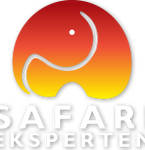North Western Namibia
Along Namibia’s Atlantic coastline, starting at the border with Angola and stretching 500km to the south, lies the Skeleton Coast Park, which was created to protect the coastline and a desert than runs around 40km inland. The park gets its name from the many whale skeletons, and the close to 1,000 shipwrecks that can be found on the beaches. There are also a number of river deltas along the coast, which have a fine avifauna and can also be visited by antelopes and predators.
Along the coast you can also find a number of large colonies of fur seals, but the largest of which with its 100,000 inhabitants, lies just south of the park, around 150km north of Swakopmund, in a small reserve created for them at Cape Cross. The seals are always very active in these colonies, the large males often taking part in violent confrontations with each other, as they seek to defend their small territories. Occasionally the colonies receive unwelcome guests, brown hyena, jackals and even lions sometimes come down to the beaches to raid the populations of fur seals.
In the area east of the Atlantic coast, in Damaraland and Kaokoland, the landscape is dominated by dry stony plains and beautiful, red-brown rocky hills. A number of small rivers run through this area. They often appear partially dried-up, but their waters, even if underground, provide the basis for local plant and animals. This district, which stretches from Twyfelfontein and Palmwag all the way up to the River Kunene and the beautiful Epupa waterfall on the Angolan border, is renowned for its elephants that have adapted themselves to life on the fringes of the desert, and the desert adapted black rhinos. This population of free living black rhino is the only one in Africa that can be found living outside the protection of national parks or game reserves. In a few places you can join local experts, in a vehicle or on foot, who are able to track these animals and often find them. Despite the arid environment, here you can actually find reasonable populations of lions, leopards and cheetah, which can only sustain themselves because there are relatively good numbers of many antelope species such as greater kudu, gemsbok and springbok, as well as giraffes, mountain zebra, baboons and ostrich.
The area is also famous for the cave paintings and carvings, thought to be between 2,500 and up to 6,000 years old, near Twyfelfontein, and the 260 million year old petrified forest between Twyfelfontein and Khorixas. It is also possible to visit the local Himba-people who live in this harsh, dry landscape.
Highlights:
Impressive, very active colonies of fur seals on the Atlantic Ocean coast
Safari, by car or on foot, following the signs and tracks to find desert living rhinos and elephants
Magnificent mountainous landscapes, with beautiful colours and good numbers of animals
High season: June to March
These attractions can be seen on the following tours











